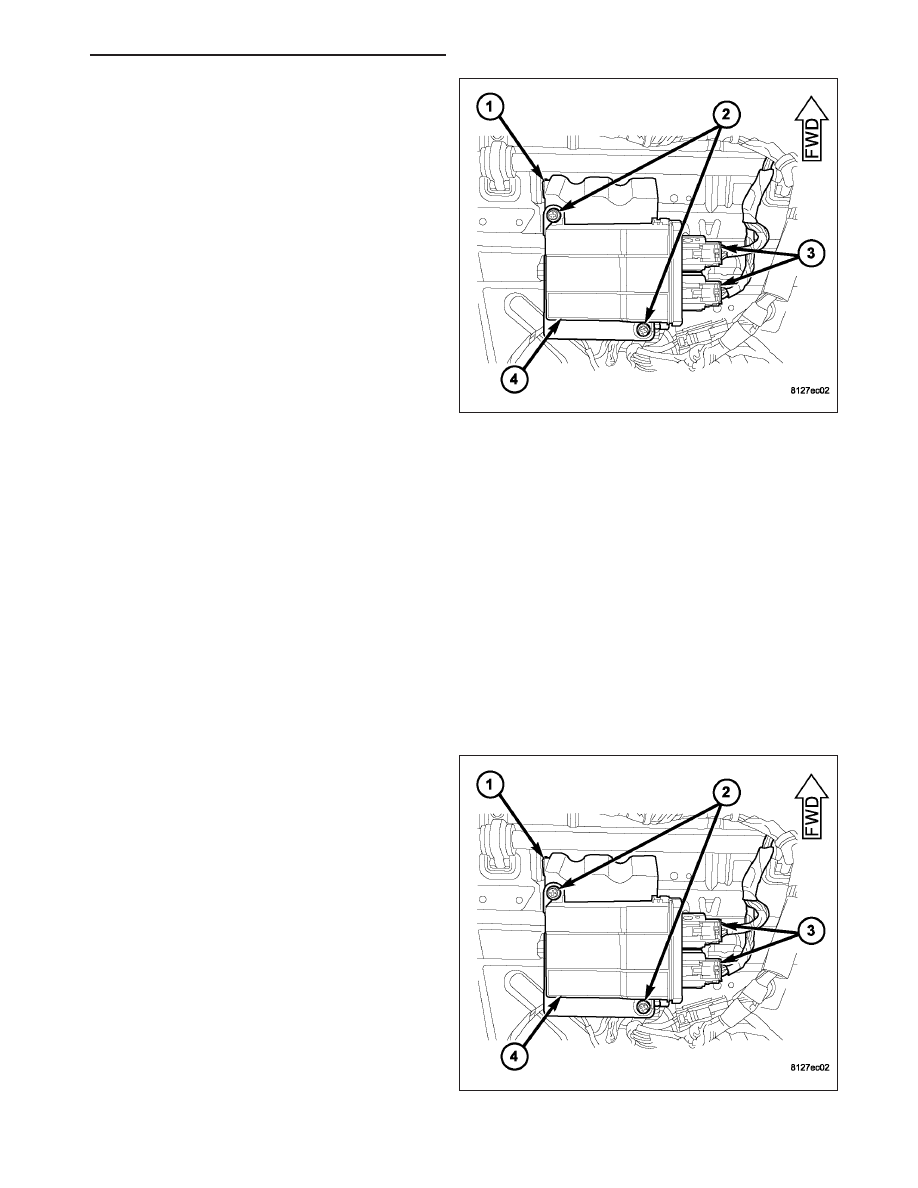Dodge Durango (HB). Manual - part 556

1. Disconnect and isolate the battery negative cable.
Wait two minutes for the system capacitor to dis-
charge before further service.
2. Reach under the front edge of the passenger side
front seat cushion to access and disconnect the
two seat wire harness connectors (3) from the
Occupant Classification Module (OCM) (4) connec-
tor receptacles located on the inboard facing side
of the module.
3. Remove the two screws (2) that secure the OCM
to the OCM bracket (1) on the underside of the
passenger side front seat cushion frame.
4. Remove the OCM from under the passenger side
front seat.
INSTALLATION
WARNING: To avoid personal injury or death, on vehicles equipped with airbags, disable the supplemental
restraint system before attempting any steering wheel, steering column, airbag, occupant classification sys-
tem, seat belt tensioner, impact sensor, or instrument panel component diagnosis or service. Disconnect
and isolate the battery negative (ground) cable, then wait two minutes for the system capacitor to discharge
before performing further diagnosis or service. This is the only sure way to disable the supplemental
restraint system. Failure to take the proper precautions could result in accidental airbag deployment.
NOTE: A non-calibrated Occupant Classification Module (OCM) is available for separate service replace-
ment. The OCM and all of the other components of the Occupant Classification System (OCS) including the
passenger side front seat, the seat weight sensors, the passenger or driver seat track position sensor and
the seat adjusters, cushion, back, frame, foam, springs, and wiring harness are a factory-calibrated and
assembled unit. Any time any one of these components is removed or replaced for any reason, the OCM
must be re-calibrated using a diagnostic scan tool, the Occupant Classification Seat Weight special tool,
and the Occupant Classification System Verification Test. Refer to the appropriate diagnostic procedures.
1. Carefully position the Occupant Classification Mod-
ule (OCM) (4) to the OCM bracket (1) on the
underside of the passenger side front seat cushion
frame. When the OCM is correctly positioned, the
connector receptacles on the module will be
pointed inboard in the vehicle.
2. Install and tighten the two screws (2) that secure
the OCM to the OCM bracket. Tighten the screws
to 2 N·m (15 in. lbs.).
3. Reconnect the two seat wire harness connectors
(3) to the OCM connector receptacles located on
the inboard facing side of the module. Be certain
that the latches on both connectors are each fully
engaged.
4. Do not reconnect the battery negative cable at this
time. The supplemental restraint system verification
test procedure should be performed following ser-
vice of any supplemental restraint system compo-
nent. (Refer to 8 - ELECTRICAL/RESTRAINTS -
STANDARD PROCEDURE - VERIFICATION TEST).
HB
RESTRAINTS - SERVICE INFORMATION
8O - 493